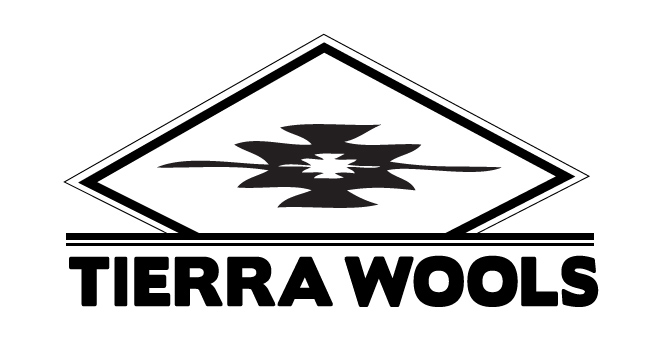Before the excitement of choosing colors, before the design begins to take shape on the loom, before the finishing and the sense of pride in another finished piece, there’s the warp. The warp is the foundation of every weaving we make, and the choice of foundation has a profound and lasting effect on everything that’s built on it. Choose a warp that’s too light and it may snap under pressure; choose one that’s too heavy and the ridges of the warp might be too prominent in your finished piece. So how do you decide which one to use?
As you might have guessed, the warp you choose depends largely on the form and function of your desired weaving – and what your loom is able to accommodate. At Tierra Wools we like to think of it as the three ‘S’s of warping: strength, size, and shade. Let’s think through the effects of each ‘S’ on your finished piece.
Strength
All warps need to be tough to hold up against the pressure put on them by each pass of weft yarn – but how tough? Weft-faced weavings, where the warp is completely covered by weft yarns – think rugs or wall tapestries – need a very strong and durable warp to hold their shape for years to come. Stiffness isn’t a problem in these finished fabrics because we want these items to lay flat and, in the case of rugs, to maintain their integrity with perpetual use. Pull hard on these warp yarns and you shouldn’t be able to snap them with your hands. By contrast, items like pillows or placemats require a slightly softer warp because the goal is to create a more pliable fabric, one that folds and conforms comfortably to a pillow form but will still hold its rectangular or square shape through years of cat naps or family dinners. And when creating wearable fabrics like a shawl or wrap, a softer warp is essential to create the drape and suppleness desired in these items.
Size
Generally speaking, the thickness of the warp should be roughly equivalent to the thickness of the weft yarns. Too great a mismatch will result in increased tension on the thinner threads in the weaving. Thinner warp threads tend to be weaker than thicker threads and run the risk of snapping if the pressure of the weft is too great. A warp that is overly thick can also affect the appearance of your finished weaving: while Rio Grande style weavings often have some warp vs. weft texture, an overly thick warp can create pronounced vertical ridges in the fabric which can distract from the weft design and become visually intrusive in the finished project. But there’s always room for creative use of this effect: while pronounced ridges may be undesirable in a grand landscape tapestry, an intentionally thicker warp and the resulting vertical lines can be used to good effect in an abstract weaving where the final textural effect is an integral part of the design.
Shade
The choice of warp matters because it affects the final appearance of every project. In a weft-face weaving, the warp color becomes the fringe color of that weaving – and no one wants a fringe color that doesn’t coordinate with the carefully chosen hues of the weft design. In a balanced weave, where the warp color shows through the weft, the warp color is an integral part of the color palette of the finished item. Thinking through the color of your warp before you begin weaving will prevent the heartache of realizing that there’s just too much gray undertone for that striking blue and cream combo you just wove for your mother-in-law’s dining room!
How much to wind?
Winding warp is no one’s favorite part of weaving so it makes sense to wind as much as you will realistically want to use before switching to another warp type. If you’re going to make several tapestries in a row or you’re only in the pillow business, wind away so you don’t have to re-warp between pieces! But if you’re only planning to make one shawl before you start in on a rug, it makes sense to wind less so you’re not wasting your precious warp when you want to switch it up.
We hope this whirlwind walkthrough of warp selection helps build your confidence when getting ready to warp your loom for your next weaving. Check out Tierra Wools’ full selection of warp yarns on our website and be sure to contact us if you have any questions.
P.S. – An all-new warping workshop is coming soon to Tierra Wools! Keep an eye on our upcoming newsletter for all the details and the first opportunity to register!





